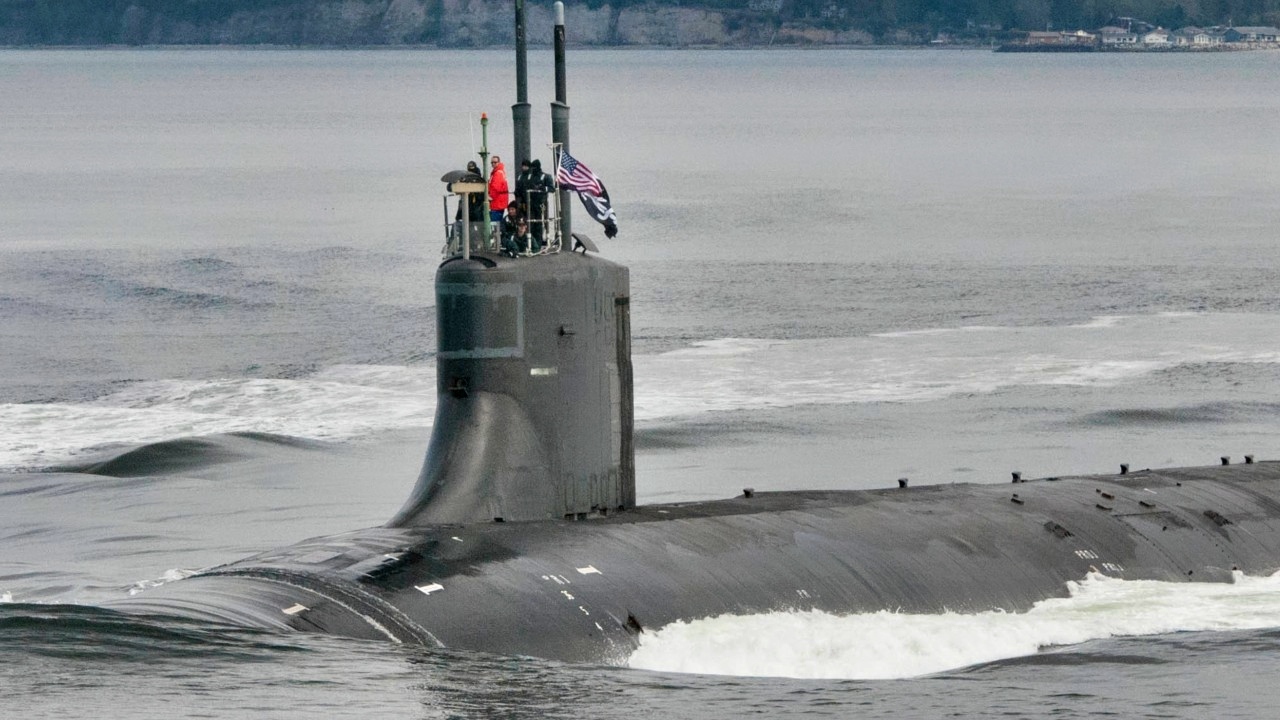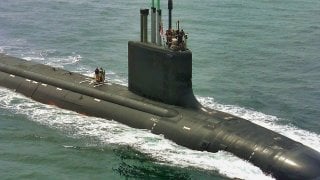Forget China: This is the Greatest Threat to the U.S. Navy Right Now
There are serious concerns that the United States doesn't have enough shipyards and maintenance facilities to support the United States Navy. But now there are reports that the work being done at one of the operational shipyards resulted in sub-standard work.
What You Need to Know: Recent reports have revealed that poor welds were found on more than two dozen U.S. Navy vessels. Navy Secretary Carlos Del Toro informed lawmakers about potential deficiencies identified by Huntington Ingalls Industries (HII) – Newport News Shipbuilding (NNS). While the welds are not on components affecting ship safety or operations, the Navy is reviewing welds on approximately 23 vessels to assess the degree of deficiency through a joint-by-joint analysis.

Faulty Welds Found on Dozens of U.S. Navy Ships, Including USS George Washington
There are serious concerns that the United States doesn't have enough shipyards and maintenance facilities to support the United States Navy. But now there are reports that the work being done at one of the operational shipyards resulted in sub-standard work.
Last week, Navy Secretary Carlos Del Toro warned U.S. lawmakers that poor welds were found on more than two dozen vessels including the USS George Washington (CVN-73). The Nimitz-class nuclear-powered aircraft carrier only completed its mid-life refueling and complex overhaul (RCOH) last year – a procedure that is normally scheduled to take three to four years but stretched out to nearly six years.
Poor welds were also found on the Virginia-class nuclear-powered fast attack submarines USS Hyman G. Rickover (SSN-795) and USS New Jersey (SSN-796).
A Serious Issue for the Sea Service
In a letter to lawmakers, Secretary Del Toro stated that he learned that "Huntington Ingall Industries (HII) – Newport News Shipbuilding (NNS) found potential deficiencies with welds on in-service and new construction U.S. Navy submarines and aircraft carriers."
Del Toro said he has "given top priority to the task of defining and examining the scope of improper welds" but added that the "welds were not on components or systems that affect ship safety or operations." The Naval Sea Systems Command (NAVSEA) "has determined the ships are safe to operate."
NNS and officials from the U.S. Navy are now reviewing welds on approximately 23 vessels, and Del Toro explained that the process includes "assessing each weld to determine the degree of deficiency through a joint-by-joint analysis."
The issue of the faulty welds only became public late last month after HII acknowledged that some workers hadn't followed proper techniques on some joints in noncritical areas. This appears to be a case of procedures not being followed, with some of the issues being described as intentional.
"We recently discovered through internal reporting that the quality of some welds did not meet our high-quality standards. Upon this discovery, we took immediate action to communicate with our customers and regulators, investigate, determine root cause, bound these matters and insert immediate corrective actions to prevent any recurrence of these issues," Newport News said in a statement, first reported by USNI News.
"HII's Newport News Shipbuilding is committed to building the highest-quality aircraft carriers and submarines for the U.S. Navy. We do not tolerate any conduct that compromises our company’s values and our mission of delivering ships that safeguard our nation and its sailors," the statement added.
Possible Solution – Robot Welding
The U.S. shipyards – including those operated by HII – continue to struggle to recruit and retain workers. Welders are just one of the positions that have been in high demand.
One solution to address the worker shortage, and help the shipyards remain on schedule, is a greater reliance on automation. Even as that issue has remained a "hot button" issue among port workers, it may be necessary at the shipyards.
Last year, shipbuilder Fincantieri, which is employing robots to aid in the building of the U.S. Navy's new Constellation-class frigates unveiled MR4Weld (Mobile Robot for Welding), a tracked welding robot that was developed in a partnership with Italian firm Comau. The MR4Weld platform is already active in the automotive industry.
Each robot is equipped with a welding torch, while the platform employs a video system that can autonomously identify welding joints or be told by a human operator where to weld. The platform is built around a high-payload, 6-axis articulated robot fitted with a welding torch that is installed on a tracked undercarriage and equipped with an integrated vision system to autonomously identify welding joints.
The robotic welder can autonomously weld steel structures, with a possible three-fold increase compared to a manual process – while also providing better welding quality and reducing ergonomic risks. A single operator can manage each MR4Weld during the transfer and welding activities. It further uses digital tools to collect welding and production data that can be used to record the welded joints. It would also follow procedures to the letter.
Author Experience and Expertise: Peter Suciu
Peter Suciu is a Michigan-based writer. He has contributed to more than four dozen magazines, newspapers, and websites with over 3,200 published pieces over a twenty-year career in journalism. He regularly writes about military hardware, firearms history, cybersecurity, politics, and international affairs. Peter is also a Contributing Writer for Forbes and Clearance Jobs. You can follow him on Twitter: @PeterSuciu. You can email the author: [email protected].
Image Credit: Creative Commons and/or Shutterstock.


